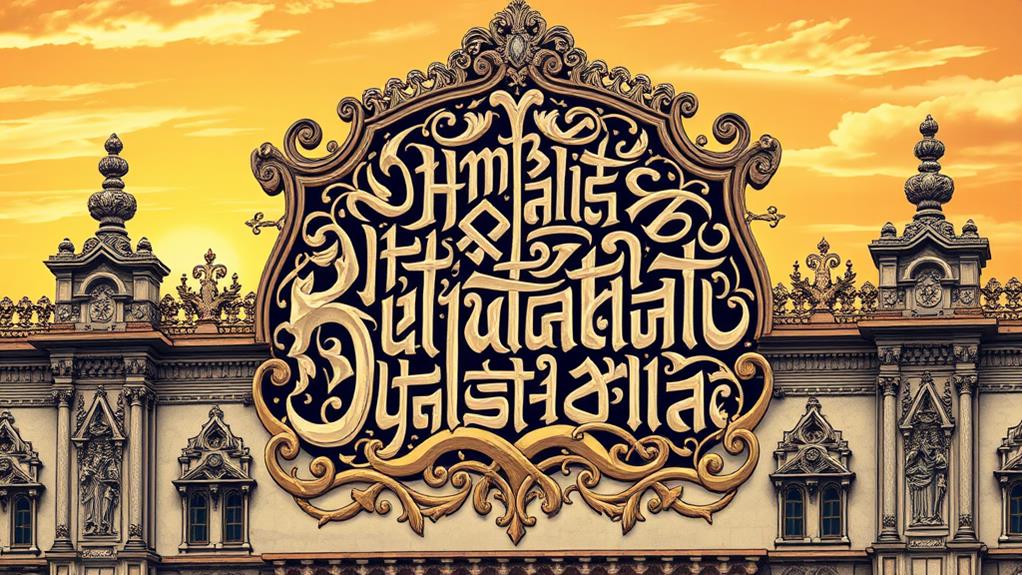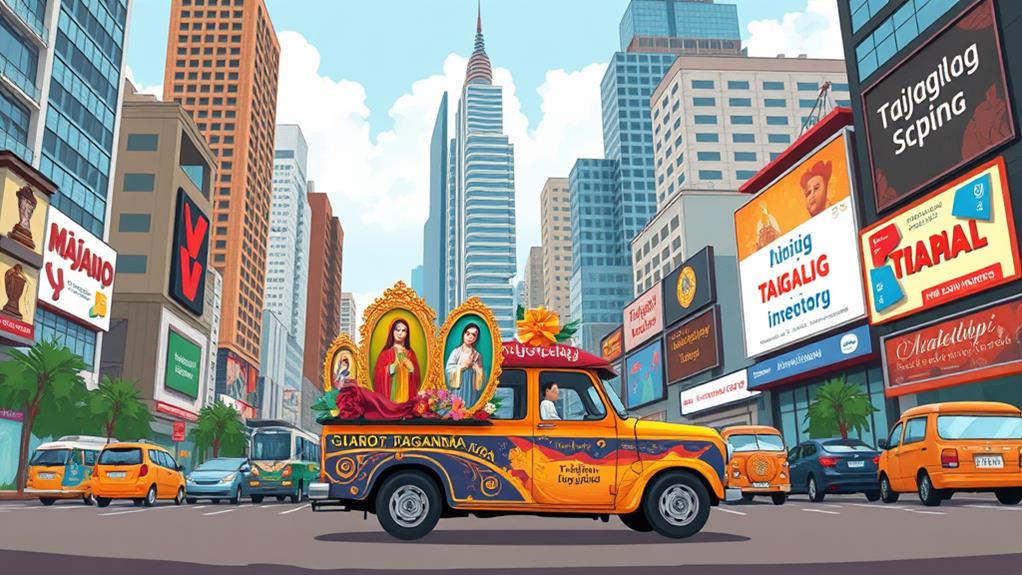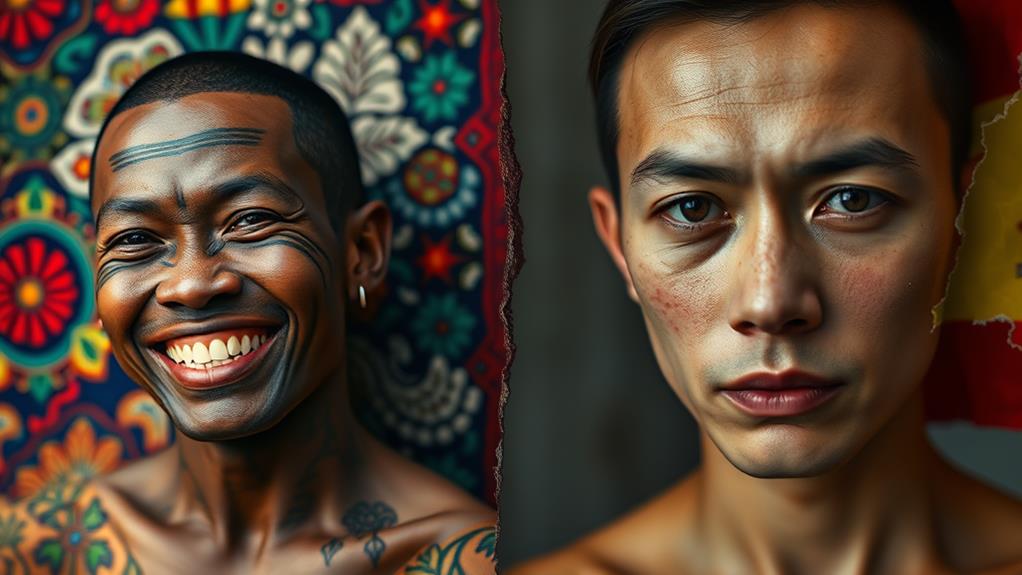Spanish Colonization Shaped Filipino Culture
Over three centuries of Spanish rule have significantly influenced Filipino culture. The integration of Spanish loanwords has enriched the Filipino vocabulary, with many Filipino words derived from Spanish, such as "komunidad" (community) and "edukasyon" (education).
Catholicism Became Integral to the Nation's Identity
Spanish colonization introduced Catholicism, which has become a fundamental part of Filipino identity. Today, approximately 86% of Filipinos identify as Catholic, making the Philippines one of the largest Catholic populations in Asia.
Lasting Legacy of Spanish Colonization
The effects of Spanish colonization extend beyond language and religion. Spanish customs have blended with indigenous traditions to create a unique cultural tapestry. For example, Filipino cuisine combines Spanish, Chinese, and Malay flavors, resulting in dishes like adobo and sinigang.
Education and Naming Conventions
Spanish colonization also influenced education and naming conventions. The Spanish introduced a formal education system, which has evolved over time to include a mix of Western and Filipino curricula.
Additionally, many Filipino names are derived from Spanish, such as Juan, Maria, and Rodriguez.
Cultural Assimilation
The blending of Spanish and Filipino cultures has resulted in a vibrant and complex cultural identity. Filipinos have assimilated Spanish customs into their daily lives, from celebrating fiestas to observing Catholic traditions like Simbang Gabi.
Overall, Spanish colonization has had a profound impact on Filipino culture, shaping the country's language, religion, education, and identity.
Historical Background of Colonization
Three centuries of Spanish colonization profoundly impacted the Philippines. This started with the establishment of the first permanent settlement in Cebu in 1565 by Miguel López de Legazpi.
The Philippines was named after King Philip II of Spain, reflecting the Spanish monarchy's influence. The country was officially referred to as 'Felipinas' during the colonial period.
Manila was founded as the capital of the Spanish East Indies in 1571, solidifying Spanish influence in the region. The Manila-Acapulco Galleon Trade, established during this period, facilitated cultural exchange between the Philippines and Mexico, contributing to the fusion of Hispanic and Asian traditions.
Spanish colonial rule lasted over 300 years, introducing significant cultural, religious, and linguistic changes that deeply embedded Spanish influence in Filipino society.
This complex cultural heritage continues to shape the Philippines today.
Language Evolution and Spanish Influence
The Spanish colonization of the Philippines had a profound impact on the evolution of the Filipino language. One significant aspect of this impact is the integration of Spanish loanwords into the Filipino vocabulary. Approximately 20% of Tagalog words are derived from Spanish, with everyday phrases like "Dios" (God) and "Eskwela" (school) showcasing the blending of languages.
The introduction of the Latin alphabet during Spanish rule led to the decline of the indigenous baybayin script. Although the baybayin script is no longer widely used, there are efforts to revive it in modern times.
Spanish was an official language in the Philippines until 1986, but its usage has significantly declined, with less than 0.1% of the population speaking it today.
The Chavacano language, a Spanish-based creole, is still spoken in certain regions. This language is a testament to the blending of Spanish and indigenous linguistic elements, highlighting the profound impact of Spanish colonization on Filipino culture and shaping the country's linguistic identity.
Cultural Assimilation and Identity

Spanish colonization has profoundly shaped the Philippines' cultural identity and assimilation. The introduction of Spanish customs and dances has enriched the country's traditional artistic expressions, blending native and foreign influences. For instance, the Tinikling dance, which originated from the Spanish Fandango, has become a popular traditional Filipino dance.
Catholicism, introduced by the Spanish, has become an integral part of Filipino culture. Religious festivals and practices are now central to the country's identity. The celebration of the Feast of the Santo Niño, a Catholic festival honoring the Child Jesus, is a significant event in the Philippines.
The fusion of Hispanic and indigenous traditions has resulted in a unique blend of customs, cuisine, and social norms. Spanish foods like avocado and coffee have become staples in Filipino diets.
Even the language has been influenced, with approximately 20% of Tagalog vocabulary derived from Spanish.
The imposition of Spanish naming conventions has left a lasting legacy on Filipino identity and cultural heritage. Many locations still bear Spanish names today.
The city of Manila, for example, was named after the Tagalog word "maynilad," which refers to the presence of the nilad plant, but was later Hispanicized to "Manila".
The establishment of fiestas, religious celebrations in honor of patron saints, has been embraced and adapted within Filipino society. These celebrations reinforce community bonds and cultural continuity.
The fiesta of San Juan, held in honor of St. John the Baptist, is a significant event in many Filipino towns.
Decolonizing Education and Narratives
Decolonizing education and narratives is crucial for reclaiming Filipino cultural identity. To achieve this, it's essential to teach the legacy of Spanish colonization to promote a critical understanding of the country's history.
This involves fostering awareness of historical narratives that have been marginalized or erased. A comprehensive curriculum is vital, moving beyond traditional colonial viewpoints to include diverse histories and the experiences of indigenous peoples.
For instance, teaching the history of the Philippine Revolution and the role of national heroes like Emilio Aguinaldo and Andres Bonifacio can provide a more nuanced understanding of the country's struggle for independence.
Global cooperation is necessary to address historical injustices and their lingering effects. This is evident in the calls for Spanish-speaking countries to take responsibility for educating on colonial history.
Baybayin as a National Writing System

Baybayin as a National Writing System
Reclaiming and promoting indigenous cultural heritage is a vital aspect of decolonization efforts. Baybayin, a pre-colonial script, has the potential to become a national writing system in the Philippines. This script has gained renewed interest, with proposals to include it in public signage and education curriculums. The goal is to reconnect with indigenous heritage and counter the lasting Spanish influence on Filipino identity.
Learning baybayin can strengthen Filipino identity and foster a deeper understanding of pre-colonial traditions. Advocates argue that it can help Filipinos appreciate their cultural roots and distinctiveness. For instance, baybayin can be used to write Filipino words and phrases, allowing people to express themselves in a unique and culturally significant way.
However, concerns arise about the practicality of baybayin in modern society. One issue is its implementation in contemporary communication systems, such as computers and smartphones. Another concern is the potential difficulty of learning a new writing system, especially for those already familiar with the Latin alphabet.
Efforts to reintroduce baybayin in education suggest a gradual approach. This could start with teachers and students, promoting familiarity and appreciation of this historical writing system.
By introducing baybayin in education, it can contribute to the conversation on reclaiming and promoting indigenous cultural heritage. This, in turn, can enrich Filipino identity and cultural understanding.
The balance between preserving indigenous practices and adapting to current linguistic realities is crucial. While baybayin represents an important aspect of Filipino cultural heritage, it's essential to consider its feasibility in modern times.
Ultimately, the role of baybayin in education will depend on finding a balance between cultural preservation and practical application.
Cultural Blend and Diverse Histories
Filipino Culture: A Blend of Diverse Histories
Twenty-first-century Filipino culture is a vibrant tapestry woven from diverse historical threads. The fusion of Hispanic and Asian traditions has resulted in a unique blend, evident in festivals, cuisine, and religious practices that reflect both Spanish and indigenous influences.
Traditional Dances: A Reflection of Cultural Exchange
The introduction of Spanish culture has given rise to various traditional dances like the Jota and Fandango, which embody the rhythmic and graceful movements infused with Spanish influence. These dances showcase the cultural exchange that has shaped Filipino identity.
Religious Practices: A Testament to Spanish Colonization
The introduction of Catholicism during the Spanish colonial period has significantly shaped Filipino cultural identity. Fiestas, which celebrate patron saints, are an integral part of Filipino culture, showcasing the integration of religious customs.
Moreover, approximately 20% of Tagalog vocabulary is derived from Spanish words, highlighting the impact of Spanish colonization on the Filipino language.
Culinary Landscape: A Blend of Flavors
The culinary landscape of the Philippines is another testament to this cultural blend. Dishes like Chicken Galantina and the incorporation of ingredients like avocado and coffee demonstrate the impact of Spanish and Mexican gastronomy.
Furthermore, the adoption of Spanish naming conventions and surnames highlights the deep-rooted cultural assimilation and the ongoing influence of Spanish heritage on Filipino identity.
Present-Day Filipino Language and Culture

The Filipino language and culture have undergone significant transformations since the Spanish colonial period, shaped by historical events and cultural exchange.
The Filipino Language
The Filipino language, primarily Tagalog, has been deeply influenced by Spanish colonization. 20% of Filipino words are derived from Spanish, reflecting the linguistic impact of over 300 years of Spanish rule.
The adoption of the Latin alphabet led to the decline of the baybayin script, a traditional Filipino writing system. Although Spanish is no longer a dominant language, less than 0.1% of the population speaks it today. Instead, English and Filipino are the dominant languages in education and communication.
Filipino Culture
Filipino culture today is a rich blend of indigenous, Spanish, and other cultural influences. The widespread celebration of Catholic fiestas showcases the dominant religion in the Philippines.
The naming conventions of cities and provinces, with many retaining Spanish names, contribute to the cultural tapestry of the Philippines. For instance, many cities and provinces in the Philippines have Spanish names, such as Manila and Laguna.
These influences are also evident in festivals, cuisine, and religious practices, making Filipino culture a unique and diverse entity.
Spanish Influence on Filipino Traditions
The Spanish colonization of the Philippines had a profound impact on Filipino culture, shaping many of its traditions. One of the most visible influences is in traditional dances, where Spanish-inspired dances were integrated into Filipino culture, resulting in a unique blend of local and Spanish traditions.
Catholicism became an integral part of Filipino culture, with 81% of the population identifying as Catholic today. This has led to the integration of religious festivals and practices into Filipino customs, such as the celebration of fiestas in honor of patron saints.
Filipino culinary traditions also reflect the Spanish influence, with popular dishes like Chicken Galantina showcasing a fusion of Spanish, Mexican, and Asian cuisines.
Additionally, Spanish naming conventions have significantly impacted Filipino society, with many towns and provinces retaining Spanish names, and the imposition of Spanish surnames still seen in Filipino last names today.
The Tagalog vocabulary has also been influenced by Spanish, with approximately 20% of words borrowed from Spanish, such as "eskwela" (school) and "dios" (God).
How Did Spanish Colonization Impact the Spread of Catholicism in the Philippines?
The Spanish colonization had a profound impact on the spread of Catholicism in the Philippines, establishing a lasting catholicism in the philippines legacy. Spanish missionaries actively converted the local population, building churches and schools to propagate the religion. Today, the Philippines remains predominantly Catholic, reflecting the enduring influence of Spanish colonization.
Impact of Colonization on Filipino Identity

The Spanish colonization of the Philippines had a profound impact on the nation's identity. The imposed cultural, religious, and linguistic norms fundamentally altered the fabric of Filipino society.
Catholicism became an integral part of Filipino identity. The Spanish introduced Catholicism, which is now practiced by 81% of the population. This influence is evident in the vibrant integration of Spanish musical elements that enrich traditional Filipino music and dance.
Traditional Filipino music and dance were shaped by Spanish influence. The colonizers introduced various dance forms that blended local and Spanish traditions, such as the Tinikling, which involves tapping bamboo poles on the ground and dancing in between them.
The Spanish impact is evident in the Filipino language. About 20% of Tagalog words are of Spanish origin, a testament to the lasting impact of Spanish culture on everyday communication.
Filipinos adopted Spanish surnames. The imposition of Spanish naming conventions resulted in many Filipinos adopting Spanish surnames, which remains a prominent feature of Filipino identity and cultural heritage.
The Spanish established educational institutions that shaped modern Filipino education. Although these institutions reinforced social hierarchies and class distinctions that persist today, they also introduced a formal education system that laid the foundation for modern Filipino education.
The Spanish colonization has had a lasting legacy on Filipino identity. Its impact is still visible in the country's language, culture, and political institutions.
Questions and Answers
How Did Spanish Colonization Impact People's Culture in the Philippines?
Spanish colonization had a profound impact on the culture of the Philippines. It introduced Catholicism as the dominant religion, which influenced religious practices and festivals. For instance, the Filipinos adopted the celebration of Christmas, Easter, and other Catholic holidays, which were previously unknown in the Philippines.
The Spanish language also left a lasting legacy. Many everyday words were borrowed into the local vocabulary, resulting in the creation of Chavacano, a creole language that combines Spanish and indigenous languages. Today, Filipino languages such as Tagalog and Cebuano still contain Spanish loanwords.
Traditional leadership structures were altered, and a fusion of Hispanic and indigenous traditions emerged in arts, cuisine, and social customs. The Filipinos adopted Spanish-style architecture, music, and dance, which blended with their own traditions.
For example, the Tinikling, a traditional Filipino dance, was influenced by Spanish fandango.
The legacy of Spanish colonization is still evident in modern Filipino culture. The country's cultural identity is a unique blend of indigenous, Spanish, and other foreign influences, shaped by centuries of colonization.
What Are the Positive Effects of Spanish Colonial Period in the Philippines?
The Spanish colonial period had significant economic benefits for the Philippines. The Manila-Acapulco Galleon Trade, which was established during this period, brought about substantial economic growth and turned Manila into a commercial hub.
This trade route connected the Philippines to Mexico and Spain, facilitating the exchange of goods and ideas.
The Filipino language was enriched with Spanish vocabulary. As a result, communication with Spanish speakers became easier. In fact, it's estimated that around 20% of Filipino words are derived from Spanish.
Education in the Philippines improved during the Spanish colonial period. The establishment of educational institutions, such as the University of Santo Tomas, contributed to increased literacy and educational development.
These institutions provided Filipinos with access to knowledge and skills that helped them participate in the country's economic growth.
How Did Foreign Culture Affect Our Culture in the Philippines?
Foreign cultures have significantly influenced the cultural identity of the Philippines. The country's cultural heritage is a result of the blending of various foreign cultures with its own indigenous traditions.
The Spanish colonization, for instance, introduced Christianity, which has become an integral part of Filipino culture. The Spanish also brought with them their language, which has influenced the development of Filipino dialects.
American colonization, on the other hand, introduced English as a secondary language and influenced the country's educational system. The Americans also brought with them their own customs and traditions, such as celebrating Halloween and Valentine's Day, which have become popular in the Philippines.
Chinese traders and immigrants have also contributed to the country's cultural diversity. They introduced their own cuisine, traditions, and customs, such as the celebration of Chinese New Year, which are now an integral part of Filipino culture.
The blending of these foreign cultures with indigenous traditions has resulted in a unique Filipino identity. This cultural fusion is evident in the country's language, food, festivals, and traditions.
The Filipino culture is rich and diverse because of its ability to adopt and adapt foreign influences, making them its own.
How Has Colonial History Influenced Contemporary Filipino Culture and Society and What Are the Key Cultural Elements That Have Persisted Through Time?
Colonial history has significantly influenced contemporary Filipino culture and society. The Philippines was colonized by Spain for over three centuries, followed by American rule, and later, Japanese occupation during World War II. These historical events have left a lasting impact on various aspects of Filipino life.
Language is one of the key areas where colonial legacy is evident. Filipino, the national language, is based on Tagalog, an indigenous language, but it has been heavily influenced by Spanish and English. Many Filipino words are derived from Spanish, and English is widely used in education, business, and government.
Cultural traditions and festivals have also been shaped by colonial history. The Philippines celebrates many festivals that originated from Spanish and American traditions, such as the Fiestas de San Pedro y San Pablo and Halloween. However, these festivals have been adapted to incorporate indigenous practices and customs.
Despite foreign influences, certain cultural elements have persisted through time. The concept of "bayanihan" (mutual help and cooperation) is a core Filipino value that has been preserved from pre-colonial times. Similarly, the use of traditional clothing, such as the "barong tagalog" and "tapis," continues to be an important part of Filipino cultural heritage.
The blending of indigenous and foreign influences has created a unique cultural landscape in the Philippines. This cultural fusion is evident in Filipino cuisine, which combines Spanish, American, and Chinese flavors with indigenous ingredients and cooking techniques. Adobo, a popular Filipino dish, is a prime example of this cultural blending.